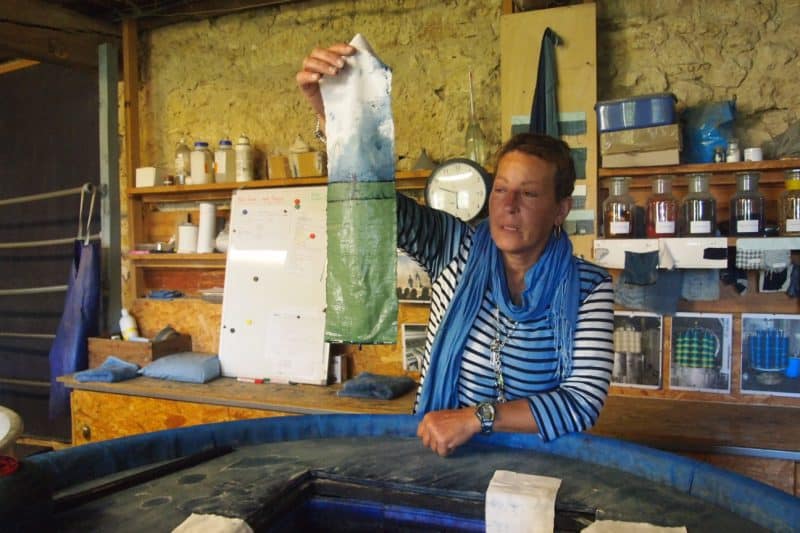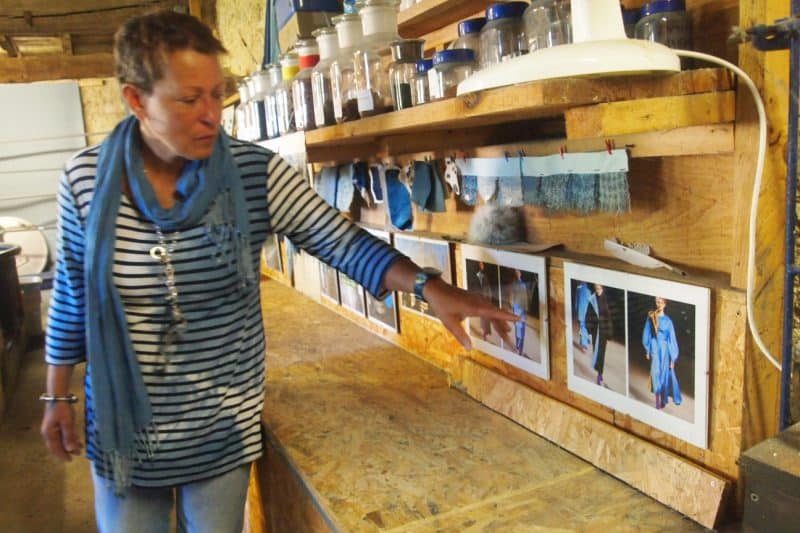She’s Bluer than Blue at Bleu de Lectoure in Le Gers, France



Denise Simeon-Lambert has a blue Jaguar parked outside her blue shop which is called Bleu de Lectoure. Her house is blue and she wears a lovely blue scarf on top of a shirt that’s stained with blue dye. Behind her sit vats of dye and every imaginable thing you can think of is colored this dusty color blue.
But depending on what the dyes is applied to the color varies…dusky blue, lighter shades of blue, and on and on. This ain’t indigo….it’s woad. We met Denise in her shop in Le Gers, France, where she works with haute couture designers, opera directors and others who are seeking a natural way to get, well, blue. The complicated process all starts with a plant that looks like a weed. It’s the woad plant, and it’s considered an invasive species in the US, so you won’t find it growing there.
But in France, Denise has 90 hectares of fields under contract and a cooperative of 15-20 farmers growing it for her. It takes an entire ton of fresh leaves to make two kilos of the blue pigment. “You have to work with it, like an animal,” she explained. “You go back and forth, and there is just one second when the color comes up perfectly…if you miss it you have to throw it all away and start again.”
She tinkered like a scientist with her late husband years ago to develop a way to get the blue color from fresh leaves–ancient peoples used the dye but they did it in a much more complex method involving human urine and a time consuming process. Her innovation made it much easier to extract the special colors.
Denise talks fast like an American, since her father was from the US and she spent some time living there. But she moved from Belgium to Le Gers and has become a fixture here just outside the hilltop town of Lectoure. Today she has visitors come to watch the dying process seven days a week. “I get Sunday mornings off,” she said.
It’s clear that this blue is a true passion for Denise, and there are so many fascinating properties of the plant-based dye. “Blind people can sense the blue by touching it,” she said. “People will say they don’t look good in blue and then put on something dyed with woad and say, ‘wow, it makes things more beautiful.” Visit Bleu de Lectoure at Pont de Pile, 32700 Lectoure, 33 05 5 62 68 78 30 www.bleu-de-lectoure.com.
This story is part of France Wine Travels, a collection of travel stories about the wine regions of France.
